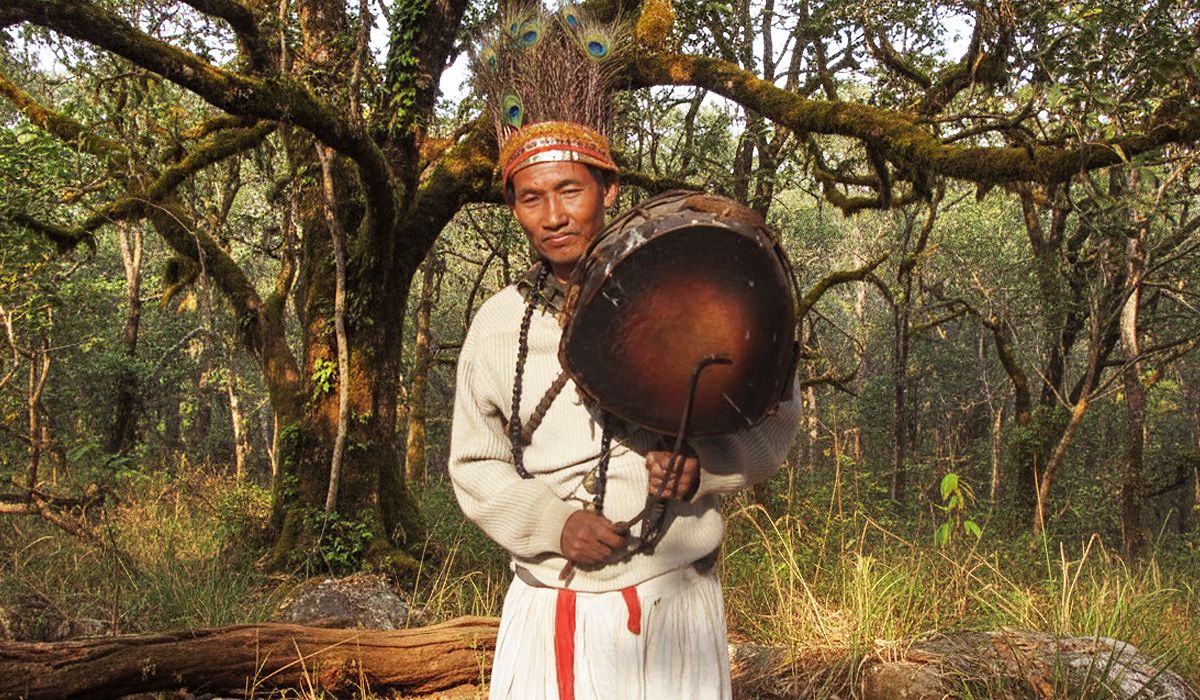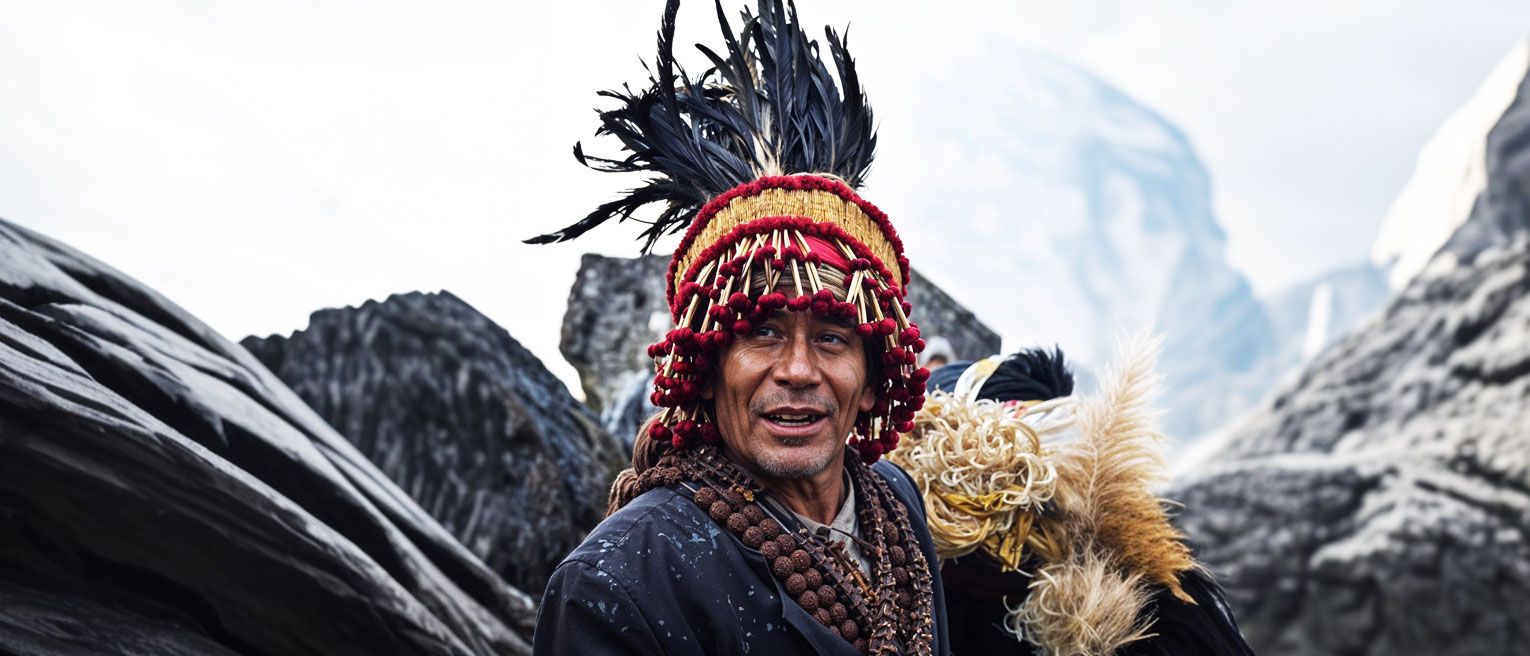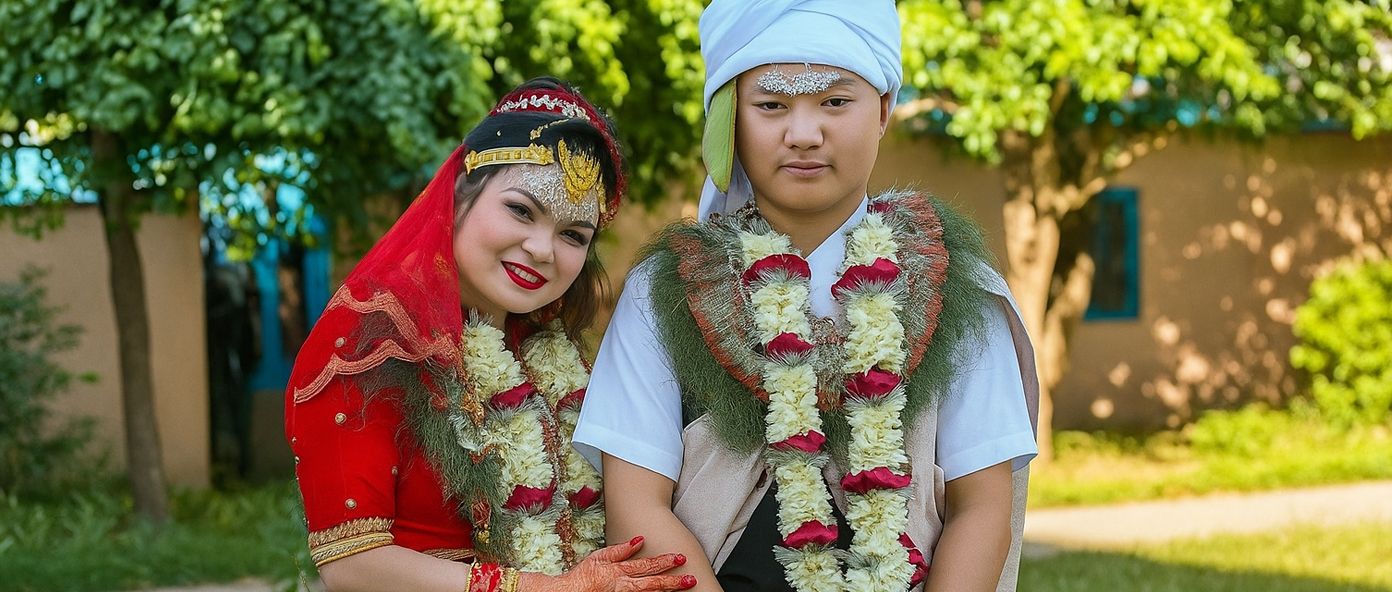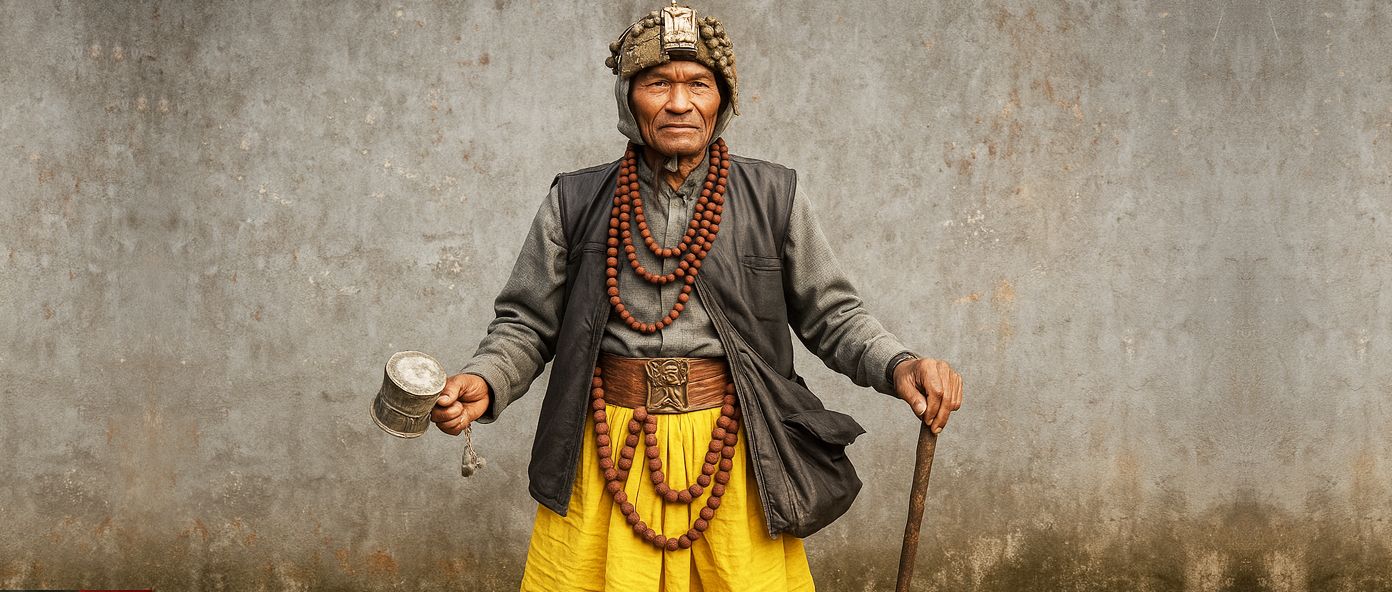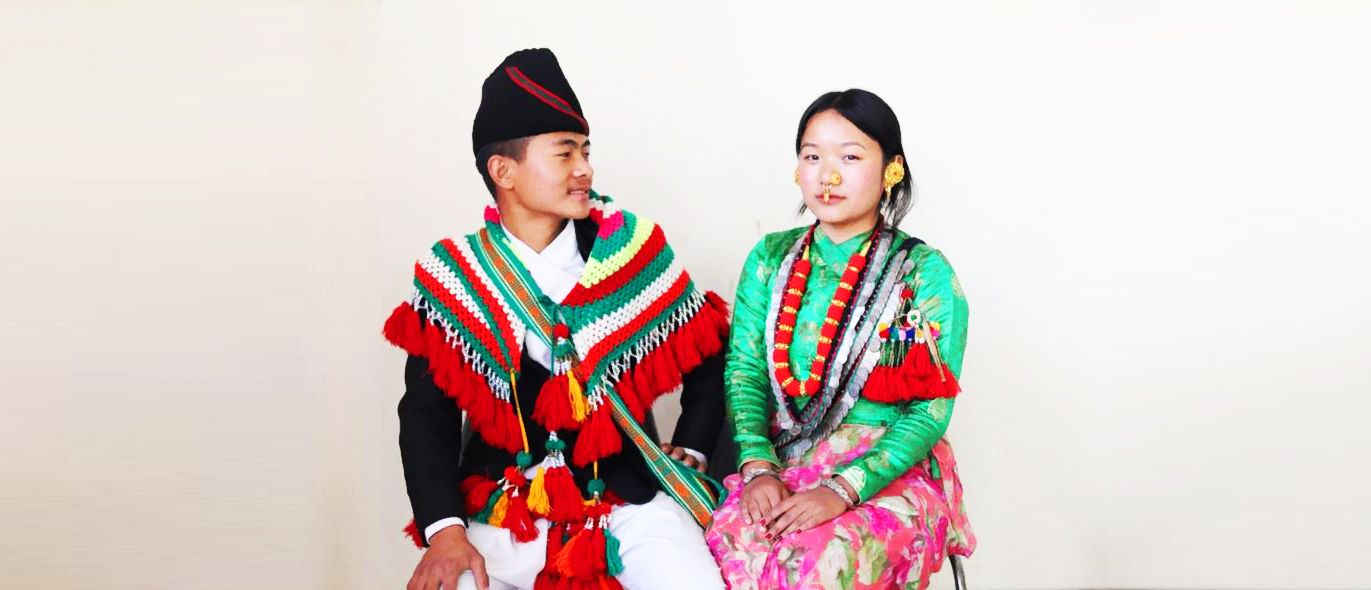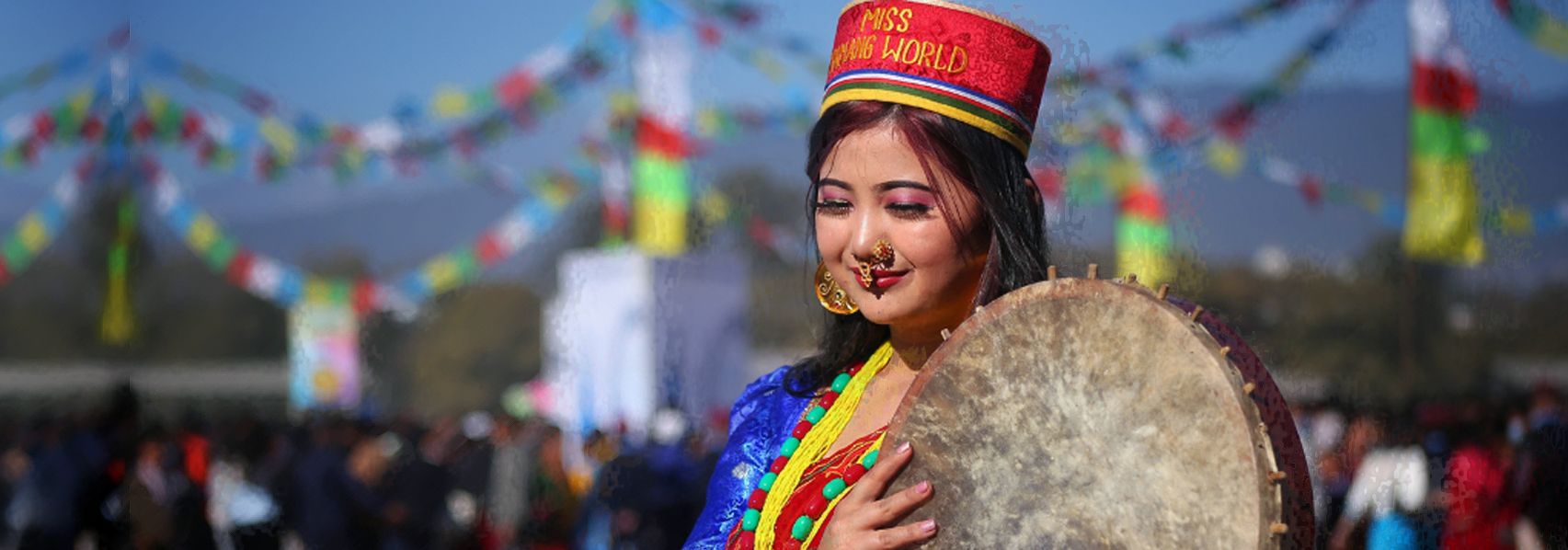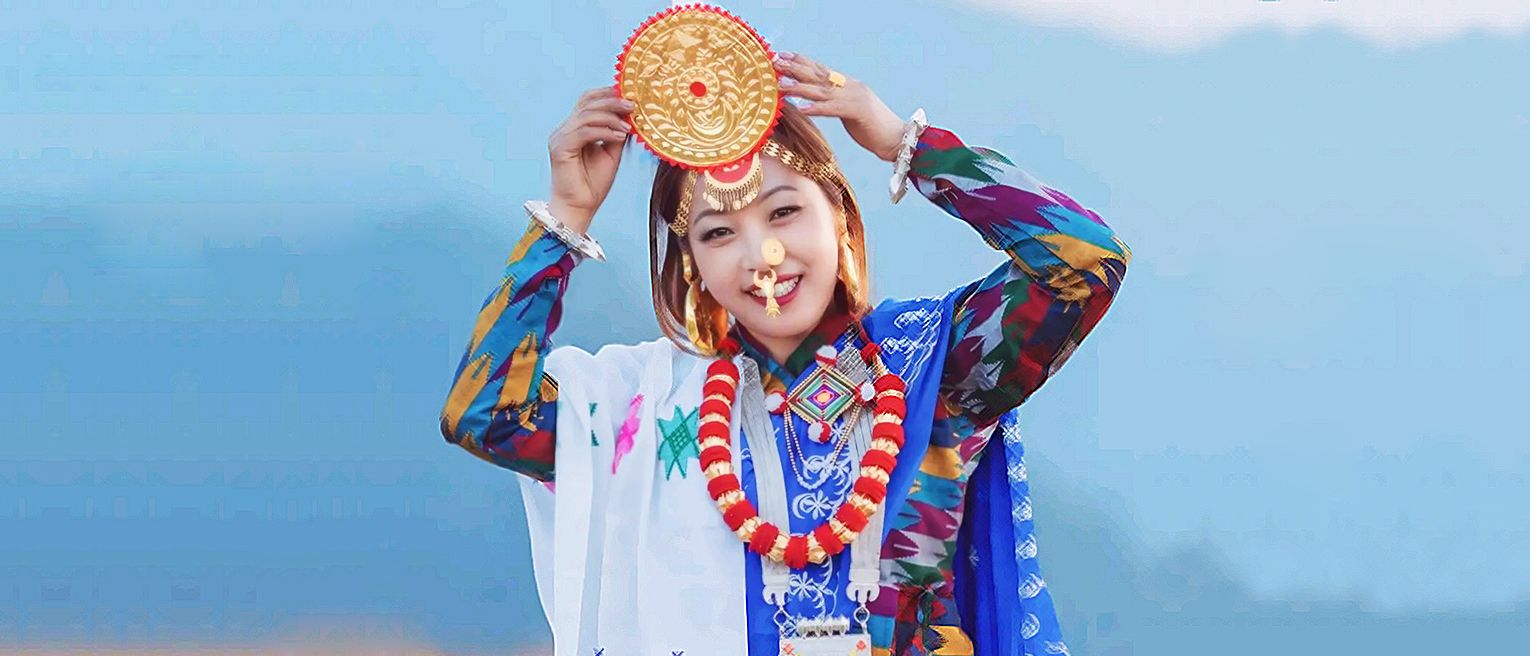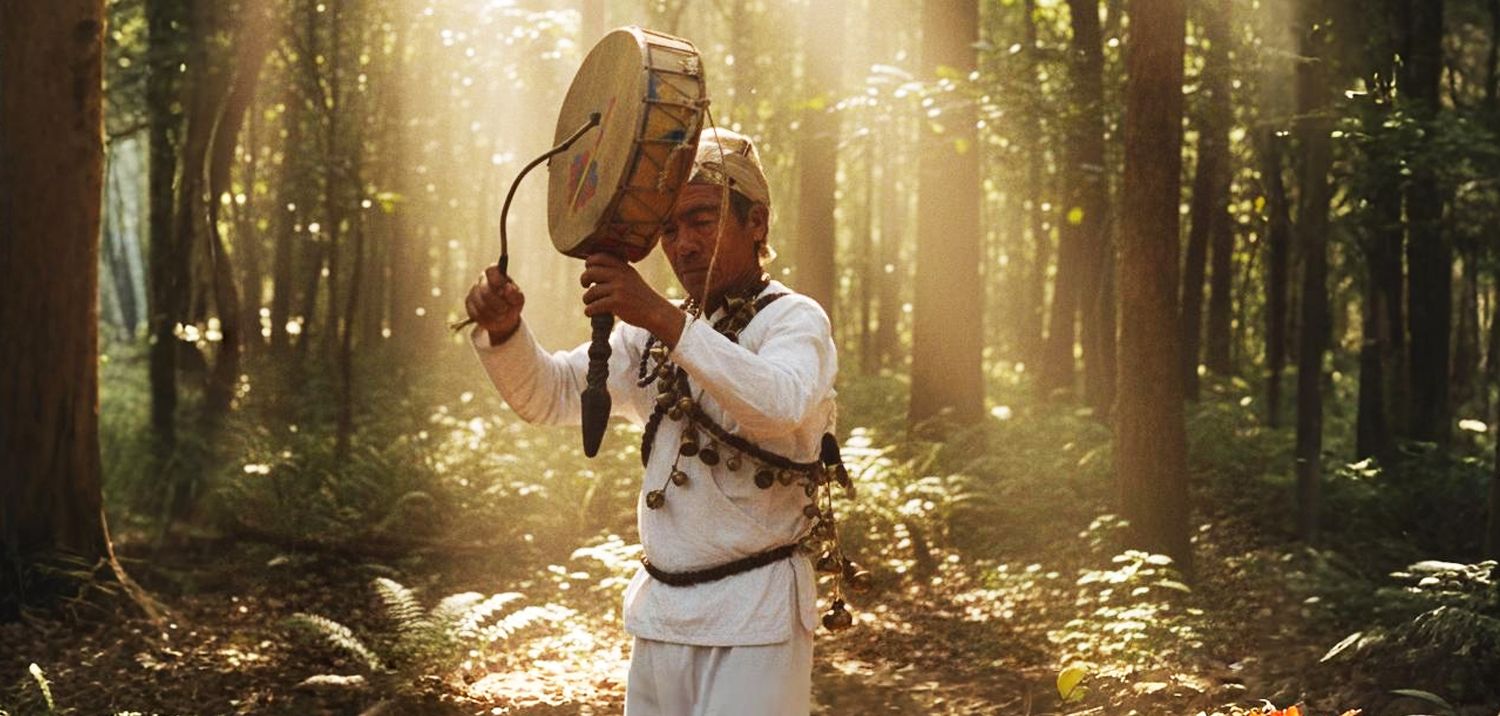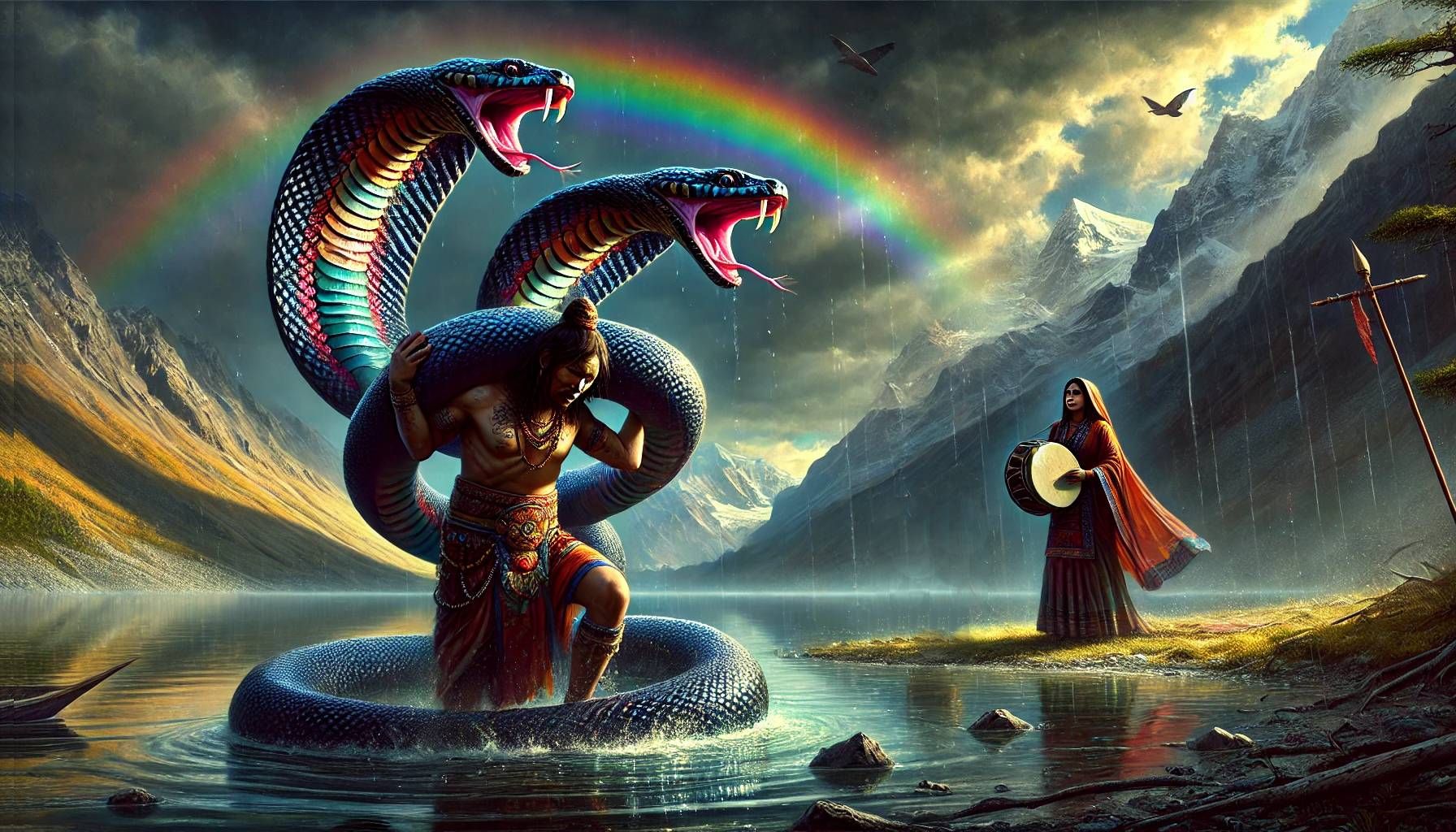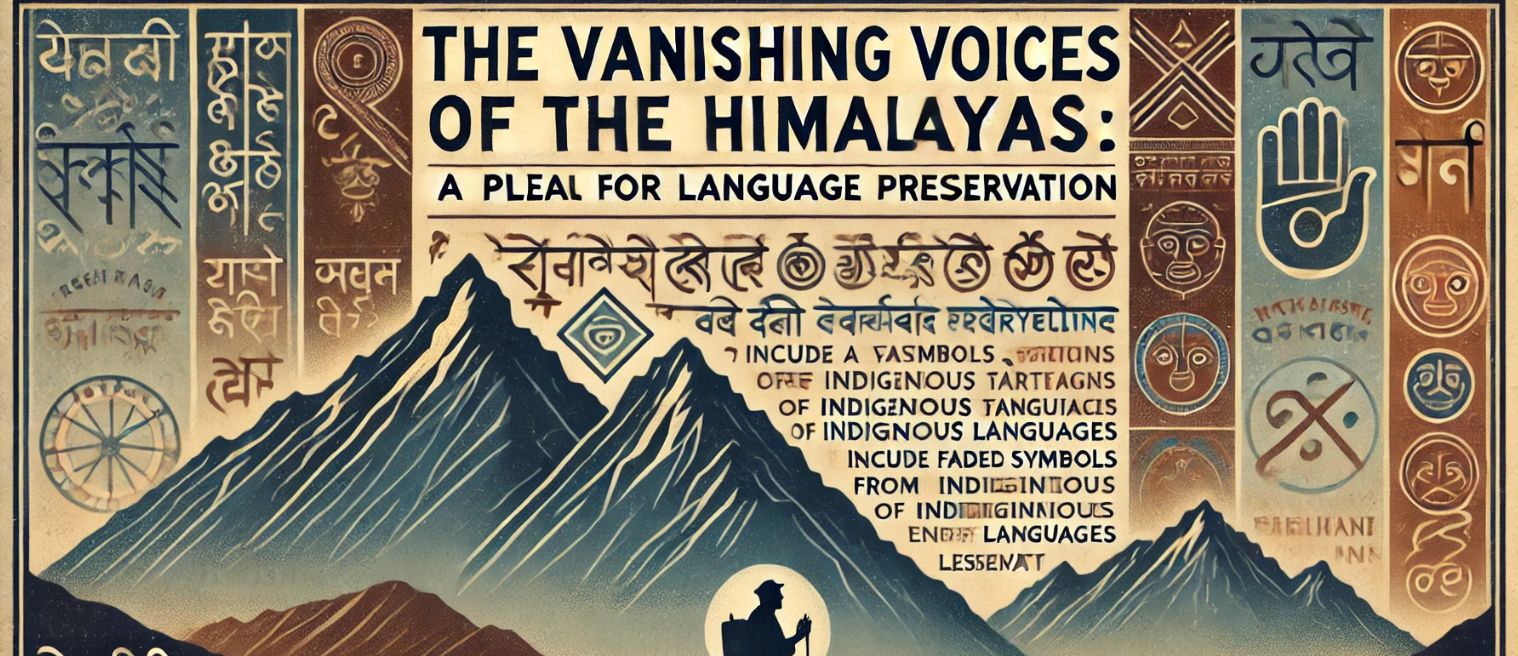Balance and Belief in Thami Shamanism
As wisps of juniper smoke rise and spiral into the air, commencing the rite, Thami shamans begin the solemn recitation of the Palakhe, the verbal journey that lies at the heart of their ritual tradition. This oral incantation opens with the community’s cosmogony, as they evoke the primordial divine spirits Ya’apa and Sunari Ama, whose union shaped both the contours of the earth and the foundations of Thami culture. From this mythic origin, the narrative flows into the advent of agriculture and the establishment of ritual practice. Far more than ceremonial repetition, these verses serve as a bridge that binds the living to the ancestral, affirming continuity across generations. Additionally, in Thami culture, Palakhe is also significant as it asserts a worldview in which spiritual, ecological, and social harmony must be actively maintained.
Alongside the oral chants of Palakhe, are the primordial deities. Thami cosmology includes a rich pantheon of nature spirits that embody the elements and ancestral forces that define their reality. Among these, the earth spirit Bhume occupies a central place, honored as both origin and sustainer of life. Thami shamans, revered as Guru Apa / Guru Bon or Guru Ama serve as mediators between these invisible forces and physical world. Their ritual journey begins with the resonant invocation “Sango! Sango! Sango!” a chant whose precise translation may elude ordinary language but whose function is unmistakable. Known as the Khola Dabla, this begins the summoning, a declaration of sacred attention, an utterance that defines the transition from the ordinary to the mythic. Spoken in binomials, with memory, and often divine guidance, it signals the opening of the ritual space where myth and reality intermingle, and the ancestral world is brought into the present.

Within the Thami spiritual landscape, there exists a distinction between two types of shamans, who both fulfill a unique role and are held in equal regard. The first is the ritual healer, a practitioner endowed with the ability to summon divine forces, conduct divination, and guide the afflicted through illness or spiritual imbalance. Using a Takey, the ritual drum, they enter a state of vibrational trance through which they communicate with spirits, perform séances, and mediate between the human and nonhuman worlds. In contrast, the second type of shaman does not engage in healing nor usually rely on drums. These figures are clan-bound ritual officiants, individuals touched directly by ancestral spirits. They are self-realized, self-learned, and serve as conduits for the voice of the ancestors during clan-specific ceremonies.
One of the most striking features of Thami ritual life is the expansive role played by the shaman. In many Himalayan communities, rituals that do not require direct mediation with the spirit world are typically conducted by lay elders. These are usually respected figures who have inherited procedural knowledge and know the proper formality of ancestral practice. But among the Thami, the shaman stands at the center of nearly all ceremonial life. Far beyond the role of healer, the Shaman officiates rites of passage from the first naming ceremony (Nwaran) to the final death rites (Mumphra or Mamphra). Their presence is noted even in marriage rituals (Bore), though their role there is more restrained. It is in the worship of the tutelary deity Nem Dewa, and during Bhume, observed during the biannual transitions of Ubhauli and Udhauli, that their authority becomes unmistakable. Here too, the shaman becomes the officiant as they regulate the ritual cosmos, ensuring that the unseen forces of the spirit world remain in harmony with the seasonal and social cycles of the human world.
Thami shamanic rituals are marked by their intensity, duration, and the immersive presence of the Guru Apa, who may chant for hours without pause, their voice rising and falling with the drumbeat and the breath of the ancestors. These extended incantations are both static recitations and living performances, occurring in real time. The shaman typically remains seated before the shrine during important rites, occasionally rising to adjust offerings or respond to intervening divine entities, then returning to their position without breaking the ritual flow.

At its center are Puchuk, conical sculptures made from grain flour reminiscent of the Buddhist Torma yet rooted in an older animist tradition. These are delicately placed upon the leaves of the Nebhara fig tree or the broad fronds of wild banana. Above the shrine, Chellam, a thin liquid made from flour, is splashed against the wall, forming an ephemeral offering that mingles matter and intention. Petals of Totala Phool, the Indian Trumpet Flower, are placed as symbols of renewal and beauty, while items such as the Thurmi, a ritual dagger, are arranged with exacting care. A small oil lamp, known as pala or diyo, burns steadily, its flickering light guiding the spirits and illuminating the sacred space. Sang, fragrant juniper, is kindled, sending smoke that is believed to cleanse and invite divine presence. Five eggs are placed on the shrine, offered to the guardian spirits, Baarah, Chirkun, Jaleswori, combined protective ancestral spirits, and one specifically to Lamadabla, symbolizing fertility, protection, and the shaman’s ongoing connection to the spiritual and ancestral realms.
And alcohol, specifically locally brewed Raksi, is poured as a libation to spirits and ancestors. At the appropriate moment, a chicken is ritually sacrificed, its blood offered to the deities to complete the transaction between the human and spirit realms. The entire space is activated through the sound of the Takey, the ritual drum, whose deep resonance propels the shaman into trance.
Among Thami shamans, the Takey, their ritual drum, is often a treasured inheritance, passed down through family lines or granted by a mentor who recognizes the calling. However, the shaman’s arsenal extends beyond this resonant instrument to include the sharp blast of the Mirkang, a trumpet fashioned from tiger bone, and necklaces adorned with bells and the vertebrae of snakes, each carrying its own power and symbolism. Yet, above all, the most essential tool remains the Thurmi, known more broadly as the Killa, a ritual dagger that serves as a symbolic nail, anchoring the shaman’s authority and binding the unseen forces that swirl around the ritual space.
The Thurmi stands as the shaman’s axis of power, a ritual blade that carries within it the memory of ancestral authority. Made of metal or bone, it gathers the strength of the elements and the breath of those who wielded it before. In the course of the ritual, the Guru Apa uses the Thurmi to fasten energies that move unseen, to steady the currents of the spirit world, and to affirm the balance that holds the human and the other-than-human in relation. Its point fixes intention, its presence marks the center of the sacred ground. Through the Thurmi, the shaman engages in a dialogue with the invisible, a necessary act of anchoring, binding, and remembering that maintains the equilibrium of the world.

The shaman, endowed with privileged access to the divine realm and guided by knowledge transmitted through ancestral memory and spirit tutelage, occupies a position of extraordinary responsibility within Thami society. Through experience, inherited ritual authority, and the use of sacred instruments, the Guru Apa becomes an agent of mediation who renders the invisible legible. In ritual practice, the shaman restores equilibrium between human and nonhuman worlds, aligning social harmony with ecological and spiritual order. What might appear as acts of healing or divination are, in essence, ontological interventions. They create moments in which the moral, natural, and ancestral planes are brought into coherence. Within this worldview, shamanism becomes a sustaining cosmology, a way through which the Thami continually reproduce their understanding of balance, reciprocity, and existence itself.
Despite the encroaching forces of modernity and the gradual transformation of social and economic life, the figure of the shaman endures as a repository of Thami cultural memory. Through ritual knowledge, oral transmission, and embodied practice, the Guru Apa preserves the ethical and cosmological foundations that continue to define Thami identity. Shamanism, resilient yet adaptive, remains central to how the community negotiates change, anchoring collective belonging through enduring traditions while sustaining a system of meaning in which the sacred and the social are inseparable.
